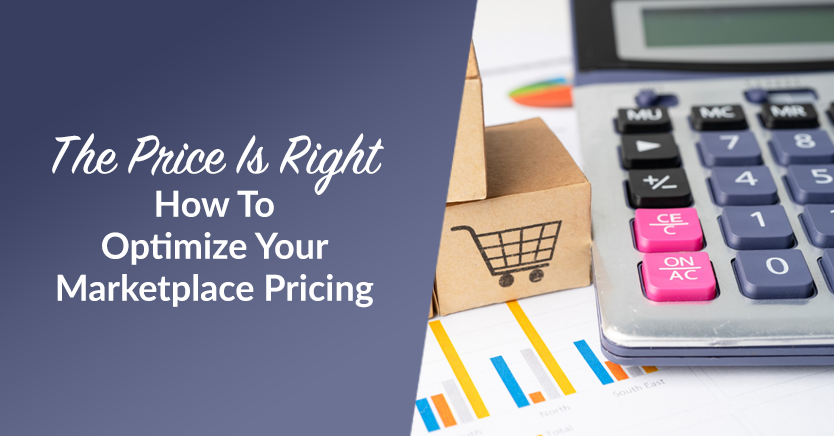
Creating the right marketplace pricing structure is a huge deal when it comes to achieving success. With numerous options available, how you price your products becomes a critical factor in helping customers decide.
Of course, every marketplace owner has their own reasons for their pricing strategy. Ultimately, we’re in this business to turn a profit, so slashing prices completely isn’t realistic.
The trick is to strike a balance that keeps your customers happy while still making you money. Finding that sweet spot requires knowledge of your options and a clear strategy. We want to help you develop both, so we’ve put together this guide to optimizing your marketplace pricing.
3 Key Factors To Consider When Building Your Marketplace Pricing Model
Not all profitable marketplaces follow the same strategy; there’s no silver bullet or magic formula for success.
What works depends on your business model, product categories, and customers. Thus, if you want to find the right pricing strategy for your marketplace, you’ll want to understand your options and pick what’s most suitable for your venture.
1. Your Marketplace Business Strategy
The multi-vendor marketplace business model leaves room for various opportunities to make money. Ultimately, the choices you make come down to how you want to work with your vendors and structure your payments. Once you have that strategy nailed down, you can build the rest of your pricing model around it.

With that in mind, here are four of the most common marketplace pricing models:
- Commissions: Your marketplace takes a percentage from the vendors’ sales.
- Subscriptions: Customers pay a fixed fee for exclusive deals, perks, and benefits (think Amazon Prime).
- Listing fee: Vendors pay a fixed charge to list their products on the marketplace.
- Ads: Your marketplace charges vendors for priority listings and ad spaces.
Think about it: if you’re making a profit on ad sales, you may not need to take a commission from your vendors. That may incentivize them to lower prices. Similarly, by charging your customers subscription fees, you could spare your vendors from listing costs, enabling them to explore a more customer-centric pricing strategy.
Any of these marketplace pricing models can work. The key is identifying the one that best aligns with your business needs and goals.
2. Your Goals and Constraints
Defining your business objectives is crucial in shaping your marketplace pricing strategy. While some operators aim to integrate several vendors into their existing e-commerce platforms, others seek to establish a niche site without direct selling.
So, what’s your specific goal for your marketplace?
Setting clear objectives involves acknowledging potential constraints. For instance, if your plan is to create a vast marketplace that hosts multiple vendors, you might find it challenging to handle product sales personally. Understanding these constraints is vital when formulating your marketplace pricing strategy.
3. Your Target Audience
Understanding your customers is key to driving most sales. Thus, it’s crucial to determine what exactly they’re looking for.

Consider a luxury brand that sells high-class items. Their clientele seeks not just a good deal but a higher quality, expecting to pay a premium for exceptional value. A price that’s too low might actually scare them away.
Remember, your marketplace pricing strategy exists to benefit you and the customers. The more you know them, the more you’ll know if what you’re doing will actually make them happy.
4 Simple Pricing Strategies To Start With
After establishing the groundwork for your strategies, you can start thinking about the specifics. Marketplaces use all sorts of tactics to find a pricing model that works for them and their customers. However, we’ll highlight some of the top strategies along with their associated pros and cons.
1. Utilize Coupons and “Free” Options
Who doesn’t like a discount, right?
Digital coupon codes or a freemium model have become some of the most common marketplace pricing strategies. They excel at attracting new customers and nudging hesitant buyers towards a purchase. That’s the positive side of things.
Here’s the negative: customers can experience discount overload. Most e-commerce sites, including online marketplaces, offer discount codes, so why should they choose you?
Additionally, customers have grown more skeptical about discounts. Why? Because offering discounts suggests that you can charge a lower price if you truly want to.
Both of these challenges don’t mean you have to throw out all your discounts. They simply show that relying solely on discounts isn’t always enough—especially if you’re not following a well-planned discount pricing strategy designed to preserve margins while still appealing to deal-seeking customers.
2. Buy Now, Pay Later
The buy now, pay later (BNPL) model has more recently become a hot trend in e-commerce. Research from Ascent shows that over 50% of surveyed consumers have utilized the service at some point since the end of 2020. Before that, only 37.65% of people had used it. That’s a 48% difference in less than a year.

The numbers make sense when you consider how much online shopping has grown since the COVID-19 pandemic. People have embraced the e-commerce market as they look for convenient, safe ways to purchase products. Having the opportunity to get a product now and pay for it later fits that criterion, and customers have noticed.
Marketplaces can respond by making this service part of their pricing models and differentiating themselves from their competitors.
However, implementing a buy now, pay later model can pose challenges. Managing different payment schedules from multiple vendors might lead to cash flow issues and administrative complexities, including varying transaction terms and potential delays in receiving full payments.
In addition, this model can nudge customers towards overspending and accumulating debt. This can lead to financial strain if repayment schedules aren’t adhered to or if there are hidden fees and interest charges.
3. Competitive Price Index
A successful pricing strategy requires more than looking at your competitors and lowering the number a couple of cents. Marketplace pricing is more nuanced and fluid than that. After all, variables change, competitors adjust, and prices fluctuate.
However, this doesn’t mean that you should leave your competitors out of the equation completely. Putting together a competitive price index can help you keep up with what others are doing.
To achieve this, calculate the total of your competitors’ prices and then divide the result by the number of competitors you have. This will give you a baseline for the average pricing for that specific product.
If you do utilize this model, remember to check back often to adjust for the natural fluctuation of pricing.
A potential downside is the oversimplification of market dynamics. It might cause you to focus mainly on prices and not consider the quality of your products or the overall market conditions. Moreover, this approach may overlook the many factors that influence what consumers choose, which can affect your pricing strategy and how competitive you are in the market.
4. Don’t Start Slashing Too Quickly
It’s easy to believe that the lowest price is the best price. However, customers don’t always think this way.
Having a remarkably different price from your competitors could actually look bad or suspicious to consumers. Furthermore, you could end up lowering your marketplace’s profit margins.
Thus, instead of drastically reducing prices to attract more customers, explore additional ways to reduce costs and compensate for the revenue you might have expected from increased sales.

Here are a few possible metrics to look at if you’re considering bringing down the overall numbers:
- Customer acquisition costs
- Customer retention
- Operation expenses
Conclusion
Your marketplace pricing strategy can make a big impact on your overall success. Knowing how to stay ahead of your competitors without breaking down your profitability is key to long-term success.
The more you understand your marketplace’s unique situation, the more you can develop a plan that fits your needs and allows you to offer the best prices for both you and your customers.
To recap, the three factors to consider when building your marketplace pricing strategy include your:
The four simple marketplace pricing strategies you can start with are:
- Utilize coupons and “free” options
- Buy now, pay later
- Competitive price index
- Don’t start slashing too quickly
Do you have any questions about marketplace pricing? Let us know in the comments!